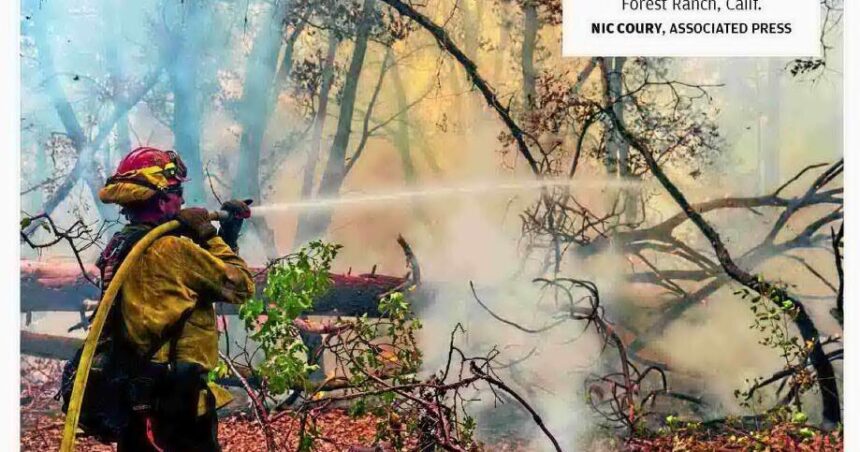Decades of extinguishing fires at the first sign of smoke combined with climate change have set the stage for a massive wildfire in northern California and numerous smaller ones across the western U.S. and Canada, according to experts.
These fires are moving more swiftly and are more challenging to combat compared to those in the past. Experts suggest that the only way to prevent future wildfires from becoming so intense is to utilize smaller controlled fires, similar to how Indigenous people managed them for centuries. However, they acknowledge that implementing this change will be difficult.
Here are some key points to understand about the current wildfires and why they are so severe:
Blazes scorch hundreds of square miles
The Park Fire, the largest blaze in California this year, started on July 24 when a man reportedly pushed a burning car into a gully in Chico and then discreetly mingled with others fleeing the scene.
People are also reading…
Its intensity and rapid expansion to over 500 square miles drew comparisons to the devastating Camp Fire that ravaged Paradise in 2018, claiming 85 lives and destroying 11,000 homes.
Communities in other parts of the U.S. West and Canada are also under threat from fast-moving flames. As of July 26, over 110 active fires covering 2,800 square miles were burning in the U.S., as reported by the National Interagency Fire Center.
Fires are growing larger and more dangerous
“Amped up” is how Jennifer Marlon, a research scientist at Yale’s School of the Environment, described the recent fires.
Marlon highlighted that there may not be more wildfires now, but they are becoming bigger and more severe due to the warming climate.
“The main message is that extreme wildfires are just part of a series of unnatural disasters that we will continue to see because of climate change,” she stated.
According to Benjamin Hatchett, a fire meteorologist from Colorado State University, ten of California’s 20 largest fires have occurred in the past five years, attributing this trend to climate change leading to more fluctuations in weather conditions.
“We experience very wet years followed by very dry years,” Hatchett explained. “This variability contributes to the accumulation and subsequent drying out of fuels.”
This year, California’s record-setting temperatures have dried out vegetation that thrived during wetter years, creating ideal conditions for widespread, large wildfires, Hatchett noted. This situation is starting to strain firefighting resources.
Furthermore, Daniel Swain, a climate scientist, mentioned that these fires burn intensely through the night, without giving firefighters a chance to rest.
Forests face challenges in recovering
Swain highlighted that some fires today are so severe and hot that they transform forests into different ecosystems.
“The forest doesn’t regenerate the same way as before in many areas,” Swain explained.
Climate change brings hotter conditions as vegetation returns, sometimes resulting in the growth of flammable invasive grasses instead of trees, further altering ecosystems.
“Climate change has changed the landscape in which these fires occur,” Swain emphasized. “This not only impacts the intensity and severity of the fires but also hampers ecosystem recovery.”
Past fire suppression contributes to current issues
In regions like the Midwest, farmers use fire to manage trees, shrubs, and invasive species. However, in the western U.S., fires have been extinguished early for many years.
Tim Brown, a research professor, noted that this has led to a buildup of fuel in certain areas, causing fires to burn intensely and destructively. Brown emphasized the need to reintroduce controlled burning practices that were once common in the West.
“The only way to mitigate this is to embrace the use of fire in a controlled manner,” Hatchett stated. “Otherwise, we will continue to face wildfires on nature’s terms, as we are witnessing now.”
Swain emphasized that addressing the wildfire risk involves incorporating fire into the landscape.
“We are going to see more fire on the ground,” Swain warned. “The question is whether we want to manage it through beneficial prescribed burns or face harmful, intense wildfires like we are experiencing more frequently.”





